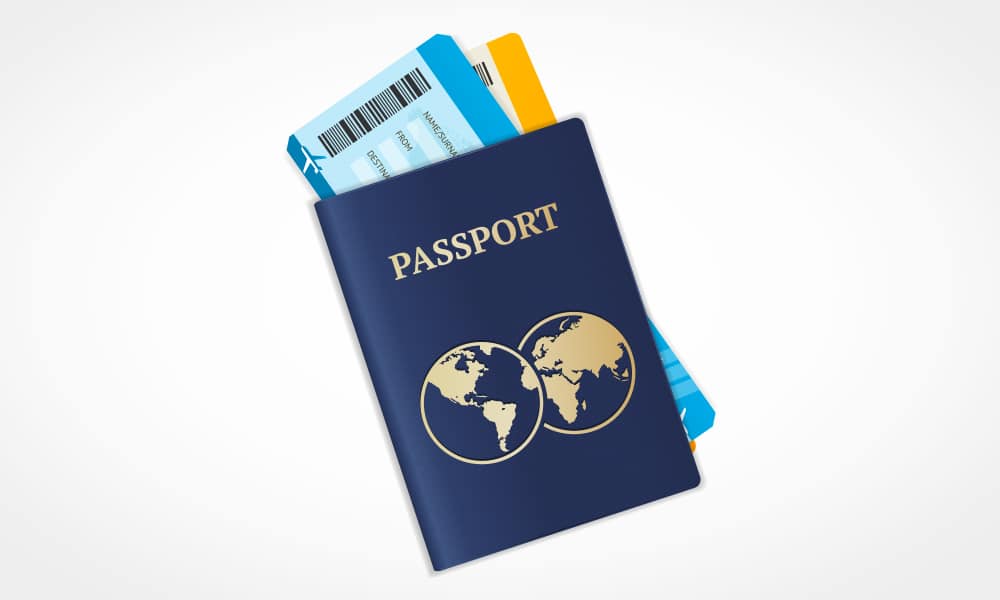- 1
- 2
- 3
- 4
- 1Destinations
- 2Trip Date
- 3Travellers
- 4Medical history
Popular Destinations

Now covers COVID-19
What is Sweden Famous for?
Sweden rarely shouts for attention, but it has the world listening anyway. It's more than Vikings and the ABBA band. So, what is Sweden famous for? From IKEA's flat-pack furniture to Nobel Prizes, this Scandinavian gem blends tradition with innovation in a way few countries can. Whether you're drawn by its icy landscapes or warm social values, Sweden has a way of surprising you — though there's plenty of both. Read on to discover.
Travel Insurance Plans on PolicyBazaar#1
- Individuals
- Sr. Citizens
- Students
Why is Sweden on Everyone's Bucket List?
Sweden quietly captures hearts—with its wild beauty, thoughtful design, and unshakeable sense of calm. Here are the top reasons why travellers visit Sweden:
- To see the Northern Lights above Abisko National Park, that is probably the first thing every traveller adds to their Sweden itinerary.
- To experience the Fika culture. It isn't just coffee; it's conversations shared over soft buns and warm mugs.
- To see Stockholm. A city spread across 14 islands, where cobbled streets lean into a sleek design, whispers stories.
- The Icehotel in Jukkasjärvi, where walls, beds, and even glass are made of snow.
- Because the magic of Lapland is real, here, reindeer glide across the frozen ground, and Sámi voices carry old stories.
6 Reasons Why Sweden is So Popular
Sweden grows on you—quietly, steadily. The more time you spend here, the more you understand why it leaves such a lasting impression. Here is why so many people talk about this country:
1. The Landscape
Sweden's beauty isn't dramatic—it's composed. Clean lakes, still forests, low mountains, and skies that seem wider than they should be. You can enjoy:
- Endless pine forests that don't need signs or fences.
- Lakes that reflect the sky, especially at dusk.
- Islands that just float there, quietly, asking nothing of you.
2. The Seasons
In Sweden, time passes differently. Each season has its own pace—and people live accordingly:
Winter is long, dark, and unhurried.
With only a few hours of daylight and snow covering much of the country, life naturally slows. Swedes don't resist it; they adapt to it.
Summer arrives as something earned.
The light lingers, lakes open up, and forests turn vividly green. Evenings feel generous, and days are spent outdoors whenever possible.
3. The Northern Lights Aren't Just a Photo
You don't need to chase them in Sweden. Just head north. Abisko, in particular, offers some of the clearest skies in the world. You get:
- A high chance of sightings between November and March.
- Low light pollution and long polar nights.
- A quiet, crowd-free experience.
4. Nature Belongs to Everyone
In Sweden, you're allowed to walk almost anywhere. It's not a special experience. It's just normal. Here's what that looks like in practice:
- Allemansrätten—the right of public access—means you can camp, hike, or pick berries without asking.
- No one will look twice if you set up a tent by a lake.
- There's a quiet trust between land and people. It works.
5. The Culture
Swedish culture is confident but never loud. It's in the details like:
Fika isn't coffee—it's permission to pause.
A warm bun, a strong brew, and twenty minutes where no one checks their phone.
Swedish design is clever and thoughtful.
From minimalist interiors to metro stations that feel like art galleries, Swedish design blends beauty with use. Architecture, furniture, and even public spaces are deeply functional.
Traditions still feel real.
Midsummer, Lucia, crayfish parties—they aren't made for tourists. They're made for home.
6. The Music is in the Air
You know more Swedish songs than you think.
- ABBA still plays at weddings, in taxis, and on dance floors worldwide.
- Avicii gave unforgettable music to people beyond a generation.
- Many of the world's biggest hits were written in studios tucked away in Stockholm.
6 Top Places to Visit in Sweden
The most remarkable places in Sweden are not always the loudest. From ancient cities spread across islands to Arctic silence, you can almost hear these top must-visit destinations in Sweden that define the country's spirit.
-
Stockholm – A City Stretched Over Water
The capital flows across 14 islands, where medieval alleys in Gamla Stan give way to glassy modern design. Museums, ferries, cafés, and calm—all held together by bridges and a sense of balance. -
Gothenburg – Culture by the Sea
A port city with a relaxed rhythm and serious creativity. Gothenburg blends Nordic charm with international flair—think art-house cinemas, indie music, and some of Sweden's best seafood. -
Abisko National Park – A Window to the Northern Lights
Tucked far above the Arctic Circle, Abisko offers some of the clearest skies in the world. In winter, it becomes a quiet stage for the Aurora Borealis—uninterrupted, unforgettable. -
Visby, Gotland – History in Stone and Roses
Encircled by 13th-century walls, Visby feels almost untouched by time. Cobbled lanes, medieval ruins, and summer gardens offer a setting that's both romantic and rooted. -
Malmö – Gateway to Europe
Linked to Copenhagen by the Öresund Bridge, Malmö feels both Swedish and international. Its food scene is bold, and its architecture is modern, yet its parks and coastlines hold onto the Nordic calm. -
Sigtuna – Sweden's Oldest Town
Founded in the 10th century, Sigtuna quietly tells the story of early Sweden. Runestones, old wooden buildings, and a lakeside promenade make it ideal for slow wandering.
Best Time to Visit Sweden
The best time to visit Sweden depends on what you seek—May to September offers long days, mild temperatures, and vibrant city life, perfect for exploring Stockholm or island-hopping the archipelagos. December to March is ideal for snow, reindeer, and northern lights, especially in Lapland. Midsummer in late June is a national celebration with flowers, music, and nearly endless daylight. Each season brings a different Sweden—and all feel intentional.
Tips for Travelling to Sweden
Travelling from India to Sweden is less about culture shock and more about slowing down. Here is what to keep in mind before you pack your woollens and wander into Fika country:
- Visa isn't last-minute: Start your process for a Sweden visa early—at least 3-4 weeks before travel. Appointments at VFS fill up quickly, especially around summer, autumn, and Christmas.
- Travel insurance is non-negotiable: If you are applying for a Schengen visa from India, travel insurance for Sweden is mandatory. It must cover medical emergencies and hospitalisation up to €30,000. Carry both a printout and a digital copy.
- Sustainability isn't a trend—it's a habit: Swedes take sustainability seriously, and as a guest, it's worth respecting.
- Use public transport (efficient and green).
- Recycle where you stay.
- Don't overconsume water or energy.
- Layers are your friend: Don't let July fool you—Swedish summers can feel like Nainital in spring. Pack thermals if you're heading north. Always carry a windcheater or waterproof layer.
- Fika is a ritual: It is more than coffee—it's a moment to pause, breathe, and share something warm (usually with cardamom). Swedes take it seriously. Join in.
- Cash? Rarely needed: Sweden is nearly cashless. Cards (including Indian international debit/credit cards) work almost everywhere—even for metro rides and coffee.
- Trains over flights: Within Sweden, trains are punctual, scenic, and efficient. Book in advance for cheaper fares. Domestic flights are fine, but less eco-loved here.
- Be quiet on public transport: Swedes value silence. Phones are silent, and conversations are soft. It is considered a basic courtesy.
- Northern lights aren't guaranteed: If visiting Lapland for the aurora, plan at least 3–4 nights.
Sweden Says Kom Tillbaka (Come Back)
Sweden isn't a one-time destination. Its quiet beauty, thoughtful culture, and deep stillness leave more than memories. They leave room to come back—not as a tourist, but as someone who understands the calmness there.
What is Sweden Famous For?: FAQs
-
Q1: What’s the ideal duration for a Sweden trip?
Ans: Give it 7–10 days if you want to dive into the country's highlights—Stockholm, Gothenburg, and maybe a glimpse of the northern lights. But if you have time, say 12–14 days, it lets you slow down and feel the place, not just see it. -
Q2: Is vegetarian food available in Sweden?
Ans: Yes, and not just as an afterthought. Most places will have something warm and filling on the menu, and if you're cooking, even small-town supermarkets are surprisingly well stocked. -
Q3: What are some must-try Swedish dishes (vegetarian & non-vegetarian)?
Ans: If you eat meat, try the classics—meatballs with lingonberry, gravlax, or a slow-cooked stew on a cold evening. For vegetarians, a slice of Västerbotten pie, cardamom buns during fika, and lingonberry jam tart feel quietly indulgent. -
Q4: Are there language barriers for Indian tourists in Sweden?
Ans: Not at all. Almost everyone speaks English. Still, a simple “hej (hi)” or “tack (thank you)” adds a nice touch and gets you a warmer smile.
STANDARD TERMS AND CONDITIONS APPLY. For more details on risk factors, terms, and conditions, please read the sales brochure carefully before concluding a sale.
Policybazaar Insurance Brokers Private Limited, Registered Office - Plot No.119, Sector - 44, Gurgaon, Haryana - 122001 | CIN: U74999HR2014PTC053454 | Policybazaar is registered as a Composite Broker | Registration No. 742, Valid till 09/06/2027 | License category - Composite Broker | Contact Us | Legal and Admin Policies
* Price shown is for a 30 day trip to Sweden with 50,000 dollar coverage for an adult of age 25 years































